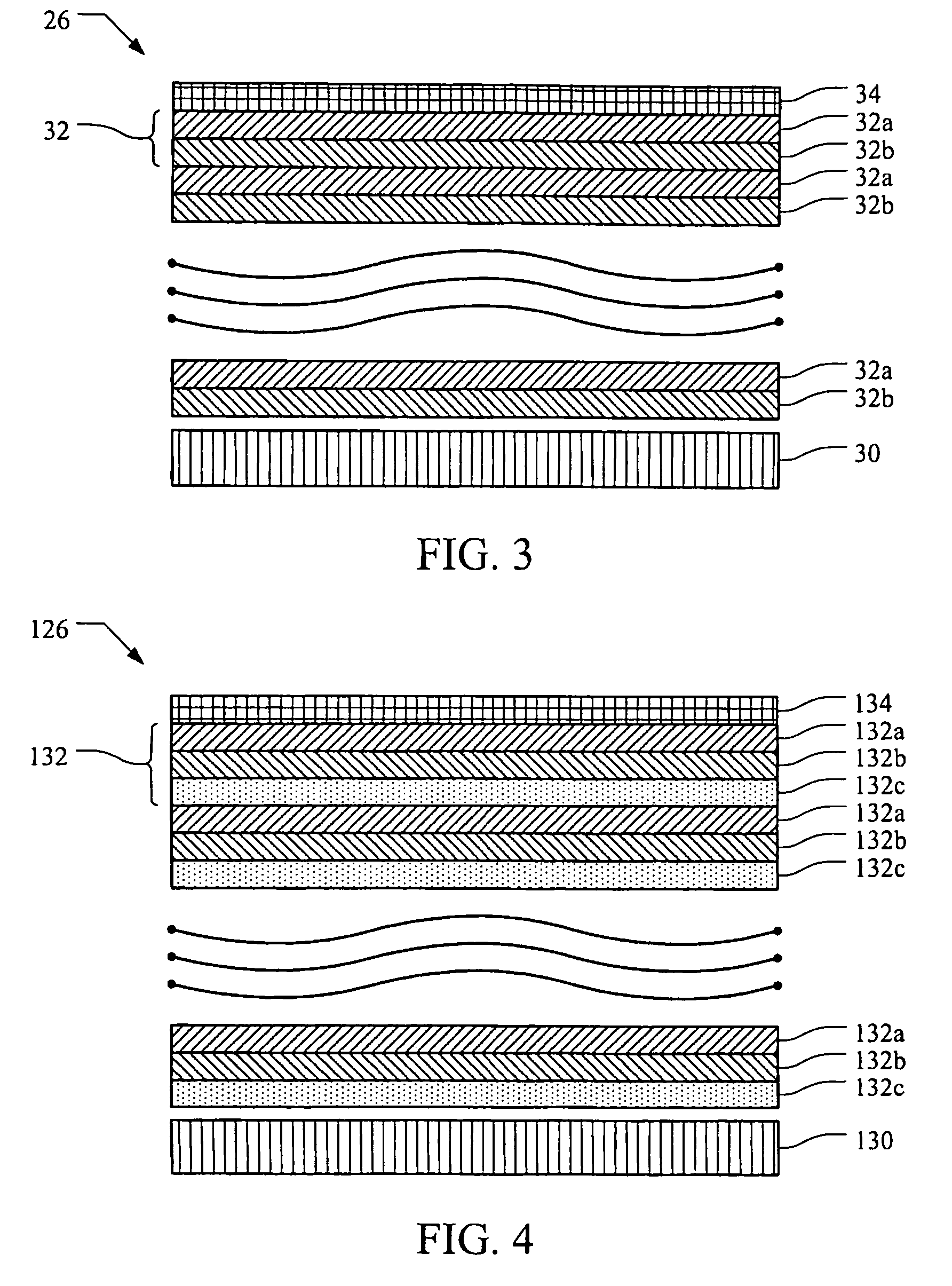Magnesium silicide-based multilayer x-ray fluorescence analyzers
a fluorescence analyzer and magnesium silicide technology, applied in the field of multilayer structure of reflecting xray radiation, can solve the problems of eds systems that can detect wavelengths over a large range but have sensitivity limitations, (1) cannot be satisfied for such wavelengths, and their performance in analyzing fluorine (f) and oxygen (o) is less efficient, so as to achieve superior performance and wide spectral range
- Summary
- Abstract
- Description
- Claims
- Application Information
AI Technical Summary
Benefits of technology
Problems solved by technology
Method used
Image
Examples
Embodiment Construction
[0033]In accordance with a preferred embodiment of the present invention, FIG. 1 depicts a system 10 for the x-ray fluorescence analysis of a sample of interest using wavelength dispersive spectroscopy. An x-ray source 20 emits a field of x-ray radiation 12 directed at a reflective optic 22 which can take various forms, including a multilayer Bragg structure. The reflective optic 22 may be used for collimating or monochromatizing the x-ray radiation 12. Alternatively, the system 10 may operate without the reflective optic 22.
[0034]As shown, however, the field of x-ray radiation 12 impinges upon a sample of interest 24, such as a silicon wafer that needs to be analyzed to determine chemical impurities. Due to a known physical reaction between the field of x-ray radiation 12 and the sample 24, a field of fluorescent radiation 14 is emitted from the sample. The field of fluorescent radiation 14 contains information in the form of radiation emission lines characteristic of the type of a...
PUM
| Property | Measurement | Unit |
|---|---|---|
| thickness | aaaaa | aaaaa |
| thickness | aaaaa | aaaaa |
| thickness | aaaaa | aaaaa |
Abstract
Description
Claims
Application Information
 Login to View More
Login to View More - R&D Engineer
- R&D Manager
- IP Professional
- Industry Leading Data Capabilities
- Powerful AI technology
- Patent DNA Extraction
Browse by: Latest US Patents, China's latest patents, Technical Efficacy Thesaurus, Application Domain, Technology Topic, Popular Technical Reports.
© 2024 PatSnap. All rights reserved.Legal|Privacy policy|Modern Slavery Act Transparency Statement|Sitemap|About US| Contact US: help@patsnap.com










